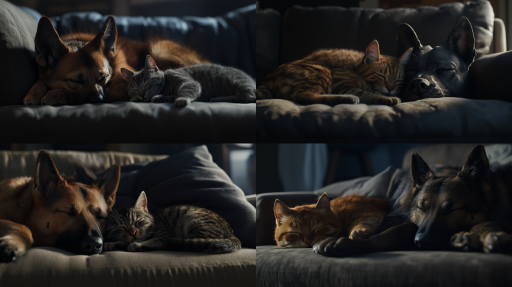Explore the Best AI Image Gallery

Unlocking the Power of SaaS Solutions in the Creative Industry
Software as a Service (SaaS) has become a cornerstone of modern business operations, and its impact on the creative industry is particularly profound. By providing scalable and flexible software solutions over the internet, SaaS platforms have revolutionized how creative professionals work, collaborate, and innovate.
Understanding SaaS and Its Benefits
SaaS refers to cloud-based software that is hosted on a server and made available to users through the internet, usually via a subscription model. This structure offers numerous advantages for businesses:
- Cost-Effectiveness: With SaaS, companies avoid the high costs of hardware and infrastructure, only paying for what they use.
- Scalability: SaaS solutions can easily scale according to a business’s needs, from startups to large enterprises.
- Accessibility: Being cloud-based means that team members can access the tools they need from anywhere, fostering remote collaboration.
Impact on the Creative Industry
The creative sector encompasses various disciplines, including graphic design, video production, advertising, and more. SaaS solutions have disrupted traditional methods, allowing creative professionals to:
- Collaborate Effectively: Tools like Slack, Trello, and Adobe Creative Cloud facilitate real-time collaboration among team members across different locations.
- Streamline Workflows: SaaS applications often integrate project management, file sharing, and communication into a single platform, enhancing productivity.
- Access Advanced Technology: Creative firms can utilize advanced features such as AI-driven design suggestions and automated video editing without significant upfront investments.
Potential Uses of SaaS in Creative Projects
SaaS applications offer an array of tools tailored for various creative tasks. Some notable uses include:
- Design and Illustration: Platforms like Canva or Figma enable designers to create professional graphics without the need for sophisticated software.
- Video Editing: Solutions like WeVideo allow creators to produce high-quality videos collaboratively in the cloud, reducing the need for extensive equipment.
- Marketing Automation: SaaS tools such as HubSpot or Mailchimp empower marketers to manage campaigns, analyze customer data, and personalize outreach strategies effortlessly.
Ethical Considerations in Using SaaS Solutions
While the advantages of SaaS are significant, there are also ethical concerns that businesses must address:
- Data Security: As SaaS operates over the internet, companies need to ensure stringent security measures to protect sensitive information from breaches and cyberattacks.
- Intellectual Property: Understanding ownership of content created using SaaS tools is crucial. Companies should clarify terms regarding copyright and usage rights to prevent disputes.
- Environmental Impact: The environmental footprint of cloud services due to energy consumption is a growing concern, prompting businesses to seek greener alternatives or support sustainable practices.
Future Trends in SaaS for the Creative Industry
The future of SaaS in the creative industry looks promising, with several trends emerging:
- Increased Use of AI: SaaS solutions will likely incorporate advanced AI capabilities, enabling features like automatic content generation and enhanced analytics for decision-making.
- Focus on Integration: The demand for integrated tools will grow, with platforms seamlessly connecting various software solutions to streamline operations further.
- Remote Collaborations: As remote work continues to thrive, the emphasis on collaborative SaaS tools will rise, allowing teams to work together without geographic limitations.
Conclusion
In conclusion, SaaS solutions are not just a trend; they represent a significant shift in how businesses—especially those in the creative sector—operate and innovate. Embracing these technologies can enhance productivity, foster creativity, and drive collaboration, ultimately redefining the landscape of the creative industry for years to come.








](https://images.ai-img.art/thumbnails/150/8c3bd422d50d35735d8fb33bd314a79e30e5b150129d5d09bdad822a2007593f.webp)
](https://images.ai-img.art/thumbnails/150/3a60737a5b67fa252207ad1ae6db245a26284f53fb5846996bb34515b39ff269.webp)

](https://images.ai-img.art/thumbnails/150/1614d64dd7156c95db952258978be809eb3db8cea4453fec69c49cbdfe63fa94.webp)
